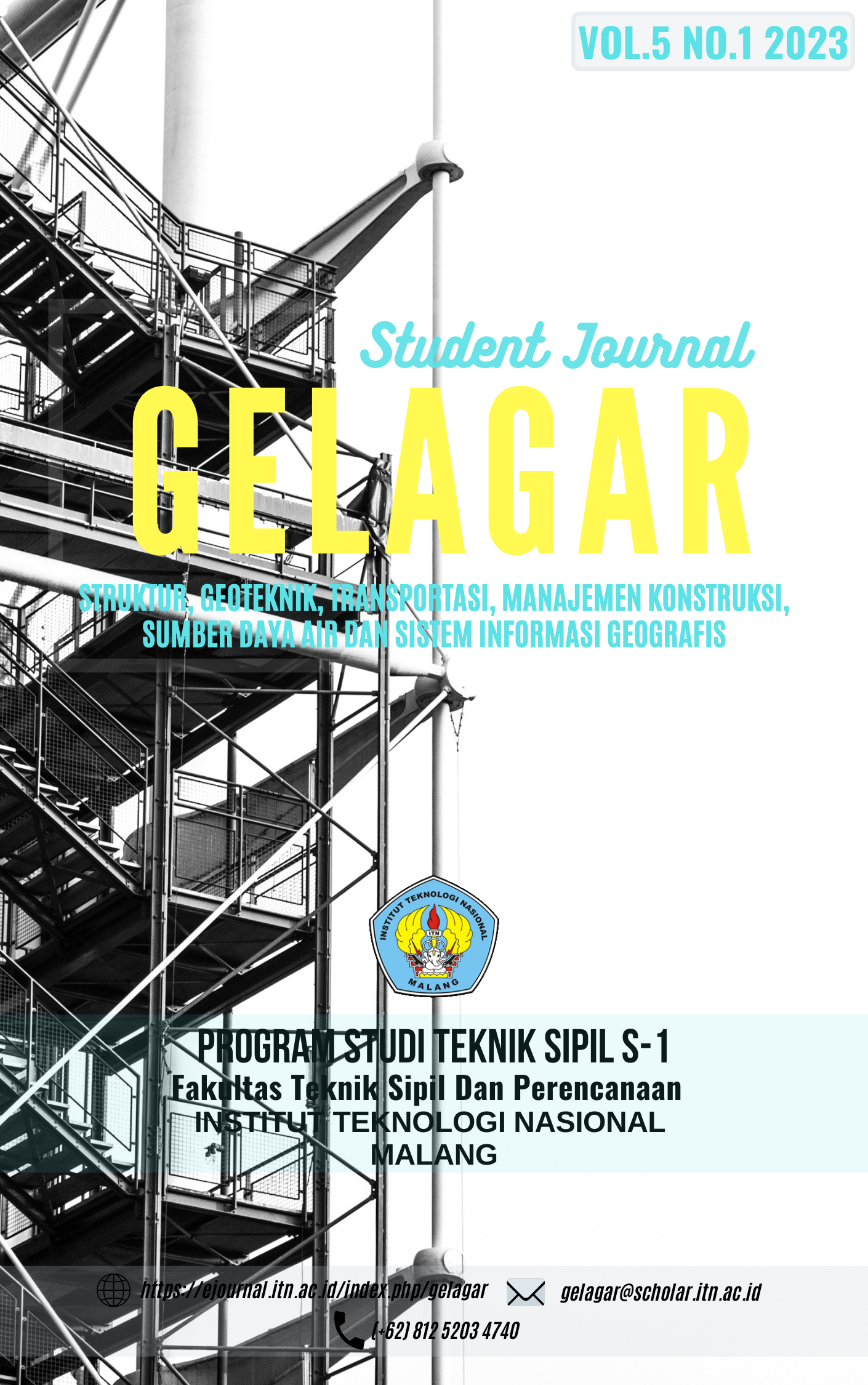STUDI PERBANDINGAN PERKERASAN LENTUR DAN PERKERASAN KAKU
Studi Kasus : Pada Ruas Jalan Kali Brantas STA 0+000 - 5+300 Kota Blitar
Abstract
One of the projects of the Blitar City government that is currently being implemented is the construction and improvement project of the Brantas River Road Section. The Brantas River Road section of Blitar City is an urban road that has an important role in economic development in the Blitar City area because there is an industrial center in the area around the road. This final report aims to compare the planning between flexible pavement planning and rigid pavement on the construction and improvement of the Brantas River Road Section in order to obtain road planning results that have a high level of strength and service life. The required data includes CBR (California Bearing Ratio), vehicle volume, traffic growth, project site climate and unit price of work referring to the Blitar City Public Works Office in the field of clan development. The method used in bending pavement is the Bina Marga method 2017 and the rigid pavement method refers to the cement concrete road pavement planning book (Pd T-14-2003). To complete this planning the programs used are Microsoft Word, Microsoft Excel, and AutoCad. From the results of the pavement planning comparison, the recommended type of pavement is Bending Pavement. Bending Pavement has a thick Layer AC-WC 40mm Layer AC-BC 60mm Layer AC-Base 80mm Layer Foundation Class A 300mm and requires a construction cost of Rp. 33,856,783,000


